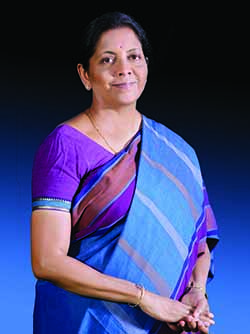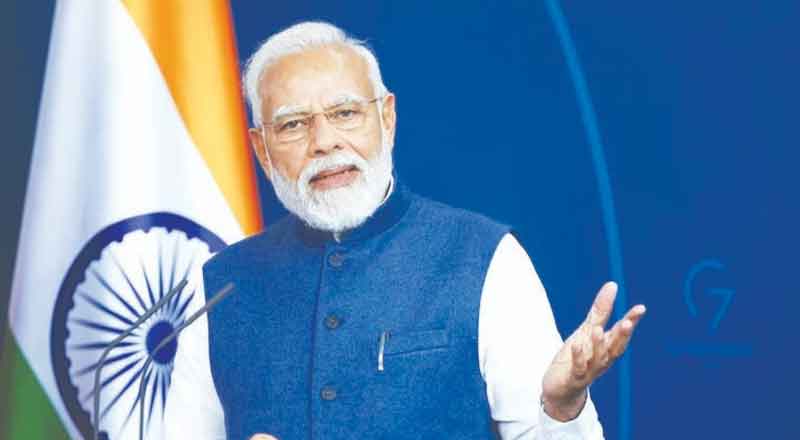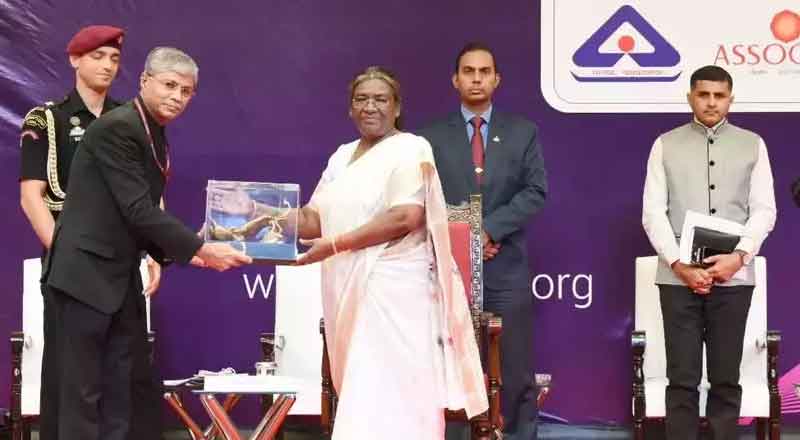The Rafale was chosen in 2012 over rival companies from the United States, Europe and Russia. The step was needed to upgrade India’s ageing fleet. The original plan was that India would buy 18 off-the-shelf jets from France’s Dassault Aviation, with 108 others being assembled in India by the state-run Hindustan Aeronautics Limited (HAL) in Bengaluru –
Dassault Rafale literally means “gust of wind” and “burst of fire” and is built by Dassault Aviation. Equipped with a wide range of weapons, the Rafale is intended to perform air supremacy, interdiction, aerial reconnaissance, ground support, in-depth strike, anti-ship strike and nuclear deterrence missions.
In September 2016, French Defence Minister Jean Yves Le Drian, accompanied by Eric Trappier, chairman – Dassault Aviation arrived in Delhi to sign a 7.87 billion Euro mega Rafale deal (about Rs 59,000 crore) for 36 Rafale fighter jets. The basic cost, armaments, offsets and service value had been finalised a few days earlier; the details (obviously secret) were contained in several-thousand pages of the Inter-Governmental Agreement. It was the end of a long saga which started in 2001. The delivery of the jets are now scheduled to begin from September 2019.
The Rafale deal has been in the news and the recent debate raised several real issues. A political party recently alleged that the off-the-shelf purchase of 36 Rafale fighter aircraft was done unilaterally “without following the Defence Procurement Procedure (DPP), without any inter-governmental agreement and in the absence of the then Defence Minister Manohar Parrikar.”
This became an election issue in the Gujarat polls. A few weeks later, when the question came to Parliament, the government termed the accusations over the deal as ‘motivated’ and ‘baseless’. On December 20, in a written response, Defence Minister Nirmala Sitharaman stated that all the provisions of DPP had been followed before an inter-governmental agreement was signed on September 23, 2016; further, it had the approval of the Cabinet Committee on Security (CCS). Two days earlier, the government had answered in the Rajya Sabha the issue of the pricing. Sitharaman affirmed that a better price was arrived at while finalising the deal and that there was no increase in its cost. She explained – “The cost of the 36 Rafale aircraft cannot be directly compared to the cost of the original MMRCA(Medium Multi Role Combat Aircraft) proposal as the deliverables are significantly different.”
She stated that better pricing, better maintenance terms and better delivery schedules being ensured in the agreement India had signed with France.
She also clarified – “In the present procurement, 36 Rafale aircraft are being procured in direct fly-away condition to meet the operational necessity of the Indian Air Force (IAF). There is no increase in the cost. Instead, a better price has been ensured.”
A long story which could have been shorter…
 India is probably the only country in the world which has such a cumbersome system for defence procurement (incidentally it took three months for Egypt to buy 24 Rafales in 2015). While the initial Request for Information for 126 Medium Multi-Role Combat Aircraft was issued in 2001, the Request for Proposal was only publicised in 2007. This is when the ‘complications’ started. Eventually, in January 2012, after a long competitive process that lasted five years, in which the American F/A-18 and F-16, Russian MiG 35, European Eurofighter and Swedish Saab Gripen had participated, Dassault and its partners Thales and Safran were selected to supply 126 planes to the IAF.
India is probably the only country in the world which has such a cumbersome system for defence procurement (incidentally it took three months for Egypt to buy 24 Rafales in 2015). While the initial Request for Information for 126 Medium Multi-Role Combat Aircraft was issued in 2001, the Request for Proposal was only publicised in 2007. This is when the ‘complications’ started. Eventually, in January 2012, after a long competitive process that lasted five years, in which the American F/A-18 and F-16, Russian MiG 35, European Eurofighter and Swedish Saab Gripen had participated, Dassault and its partners Thales and Safran were selected to supply 126 planes to the IAF.
Accordingly, of the 126, 18 planes were to be manufactured by Dassault in France, while the remaining 108 planes were to be built in India by Hindustan Aeronautical Ltd (HAL), under a Transfer of Technology (ToT) agreement.
Soon several disagreements cropped up; the transfer of technology was too ambitious. Further, Dassault was not ready to take ‘full responsibility’ for the 108 fighters to be manufactured in India by HAL. The negotiations had reached an impasse when in a stroke Prime Minister Narendra Modi unlocked the situation. On April 9, 2015, the French side was informed of Delhi’s decision to purchase 36 planes ‘off-the-shelf’. It was a pragmatic move. While dropping the MMRCA framework, India considered primarily the IAF’s ‘critical operational necessity’.
On January 25, 2016, as President Francois Hollande landed in Delhi to participate in the Republic Day celebrations, Defence Minister Manohar Parrikar and Le Drian signed a MoU the next day for the purchase of 36 Rafale aircraft. During the joint press conference at Hyderabad House, Hollande said the ‘real’ deal would be inked ‘dans les joursprochains (in the coming days).’ Nobody can deny that many ‘forces’ did not want the deal to happen. It may have resulted in delay, the ‘coming days’ might have become months, but at the end the deal will hopefully be a game changer for the IAF.
The Congress party has raised several questions on the deal, including the cost escalation for the fighters. The government has rejected the charges, but did not disclose the price details, saying a 2008 India-France agreement bars it from doing so.
“France has rejected the Congress party’s allegation that the Narendra Modi government has negotiated an overpriced deal with French company Dassault Aviation to supply the Indian Air Force with 36 state-of-the-art Rafale fighter jets.”
Dassault Aviation had however long expressed doubts about HAL’s capacity to absorb new technologies and control the quality of all the parts produced in India.
As to The Quint – “Roemer’s confidential report to the then US administration under President Barack Obama, just before his tenure as ambassador ended in 2011, said in clear terms that the HAL was not competent to be a partner of either of the two American companies – Boeing and Lockheed Martin – that were keen to bid for India’s medium multi-role combat aircraft (MMRCA), purely because it did not meet the quality standards the two US giants sought.”
An Indian expert, Air Marshal Bejoy Pandey has noted: “the major issue on account of which the contract for 126 Rafale jets got stuck in a logjam was the precondition in the tender floated that HAL would be the lead integrator, and, hence, partnership between the selected OEM (original equipment manufacturer) and the HAL would be mandatory. This was not acceptable to Dassault Aviation as the OEM did not have the confidence in HAL’s capability and competence to ensure quality standards.”
Countering allegations of any wrongdoing in the Rafale deal signed between India and France, Deputy Chief of Air Staff, Air Marshal Raghunath Nambiar recently said that what is being alleged does not match with facts at all.
He was responding to queries by reporters on the sidelines of an international seminar – the 8th Heli Power India – held at the Subroto Park in New Delhi, on allegations levelled by Congress chief Rahul Gandhi on the government in connection with the Rs 58,000 crore deal for 36 Rafale jets.
The twin-engine Rafale combat jet is designed with a multi-role fighter for air-to-air and air-to-ground attack, is nuclear-capable and its on-board Electronic Warfare (EW) systems can perform reconnaissance and radar jamming roles.
The Congress has raised several questions on the deal, including over the cost escalation for the fighters. The government has rejected the charges, but did not disclose the price details, saying a 2008 India-France agreement bars it from doing so.
Gandhi had claimed that the price of the Rafale fighters “magically” rose from Rs. 540 cr., a piece finalised by the UPA government to Rs. 1,600 cr. per jet under the NDA dispensation.
“This, who are claiming such numbers, I think they are misinformed and probably not aware of the facts that are known to us in the Indian Air Force,” Nambiar said.
Key aspects of the deal
• Defence Minister Manohar Parrikar and his French counterpart Jean Yves LeDrian signed the contract in Delhi after years of tortuous negotiations between the two countries.
• India will pay about Rs. 58,000 crore or 7.8 billion Euros for 36 off-the-shelf Dassault Rafale twin-engine fighters. About 15 per cent of this cost is being paid in advance.
• India will also get spares and weaponry, including the Meteor missile, considered among the most advanced in the world.
• Sources tracking the final negotiations had confirmed that the IAF’s Rafales will come equipped with the Meteor designed to knock out enemy aircraft and cruise missiles significantly more than 100 kms away.
• The acquisition of this weapon is likely to be a game changer in South Asia. Neither Pakistan nor China, India’s traditional military adversaries, possess a weapon of the same class. “Rafale is a potent weapon which will add to the capability of IAF,” Defence Minister Parrikar said.
• The first Rafale warplanes are slated to be delivered roughly within 18 months of the signing of the final contract.
• There is an accompanying offset clause through which France will invest 30 per cent of the 7.8 billion Euros in India’s military aeronautics-related research programmes and 20 percent into local production of Rafale components.
• The deal could not be signed this January when French President Francois Hollande was the Chief Guest for the Republic Day because India wanted a better price.
• For the Indian Air Force, the deal is bitter-sweet. On one hand, they will be getting two squadrons of the state-of-the-art fighter. The original requirement was for at least 126 jets.
• India needs at least 42 squadrons of fighters and has an existing strength of 32. The fighter fleet will go down further by about 10 squadrons as the MiG-21 fighters – dubbed flying coffins because of their poor safety record – will have to be grounded.





